OLO PLASTIC SURGERY
OLO Column
올로 칼럼
성형에 대한 궁금증, 올로 원장님이 쉽게 설명해 드립니다.


Lowering the Crease: Natural Results in Eyelid Revision Surgery | OLO Plastic Surgery
조회수 : 282
“Lowering the Crease” for a More Natural and Harmonious Look (Double Eyelid Revision Surgery)
Hello, this is Dr. Seungbae from olo plasticsurgery.
We’ve noticed that many patients come to us asking about revision eyelid surgery. During consultations,
I often hear things like, “My double eyelid line looks too high and unnatural,” “My eyes feel heavy,”
or “My overall look seems harsher than before.”
In such cases, the first surgical solution I usually consider is lowering the crease.
What Is "Lowering the Crease"?
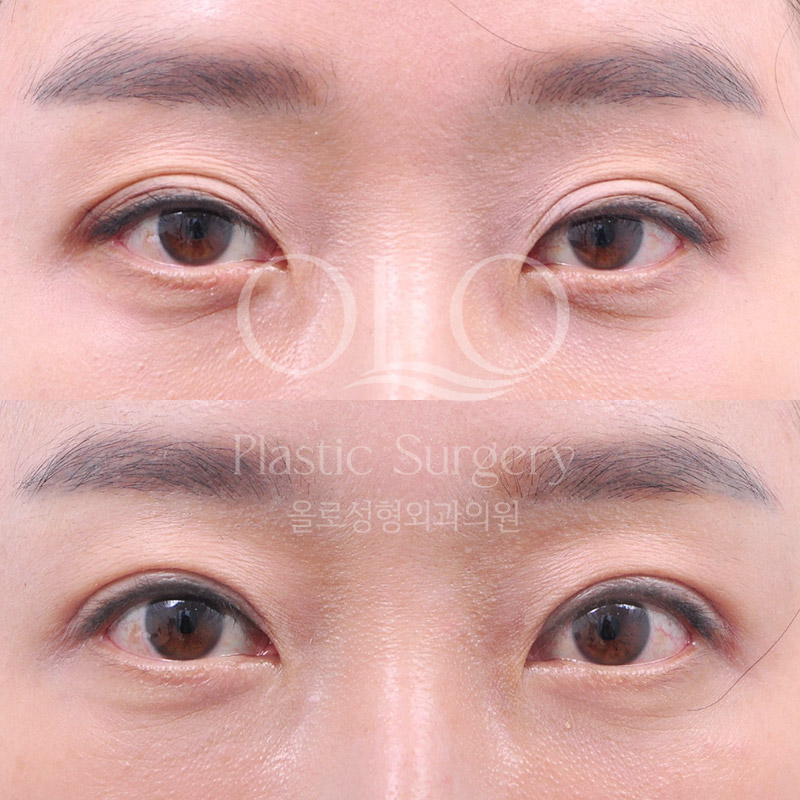
This procedure involves repositioning a previously created double eyelid line to a lower,
more natural level—restoring a softer, more balanced appearance.
(It’s sometimes called “sausage eyelid correction,” too!)
It’s especially suitable for patients who feel their eyes look smaller or
their gaze appears too intense due to an excessively high eyelid crease.
Procedure Overview
1. Assessing the Existing Crease
Using detailed diagnostics, we first locate the existing crease fixation
(often formed via incision or suture methods).
Most cases require separating the old adhesions.
2. Releasing the Previous Adhesions
We carefully dissect the overly high crease,
releasing unnecessary adhesions between the skin, muscle, and levator.
This step requires precision—improper handling can result in uneven or unnatural healing.
3. Designing and Fixing the New Line
We then design a new crease that best suits the patient’s eye shape, skin thickness, and levator strength.
During this stage, we may also reposition fat or remove a small amount of excess skin, if needed.
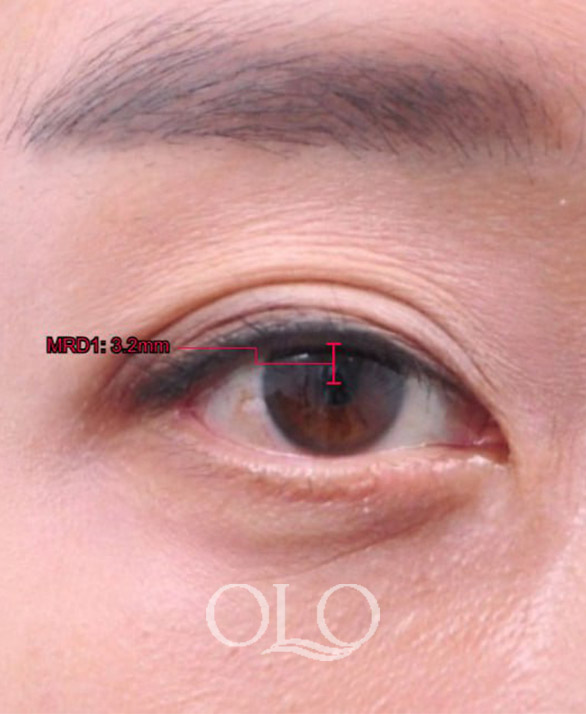
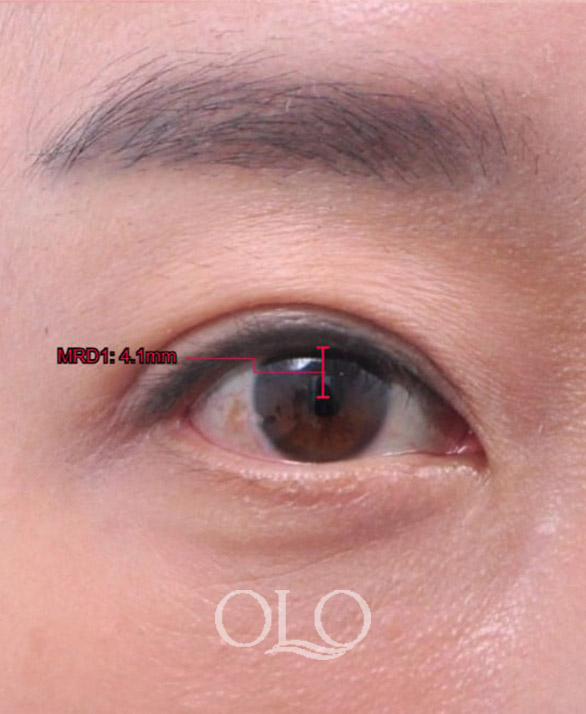
In revision cases, accurate preoperative planning is even more essential than in first-time surgeries.
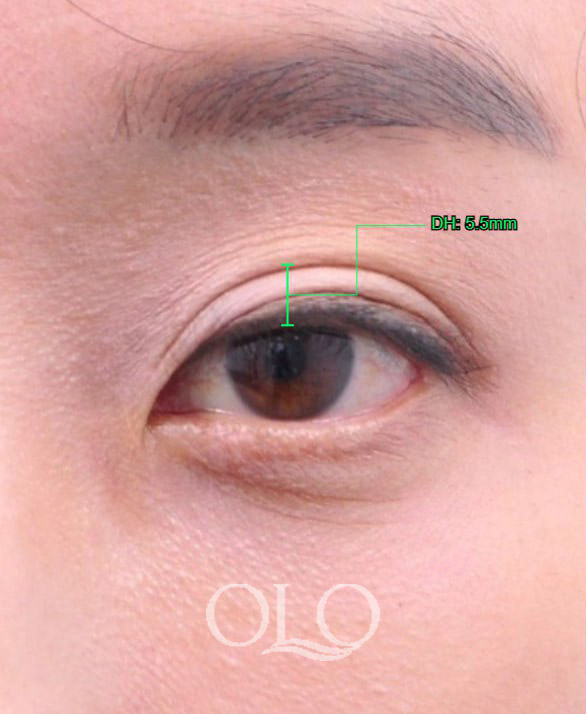
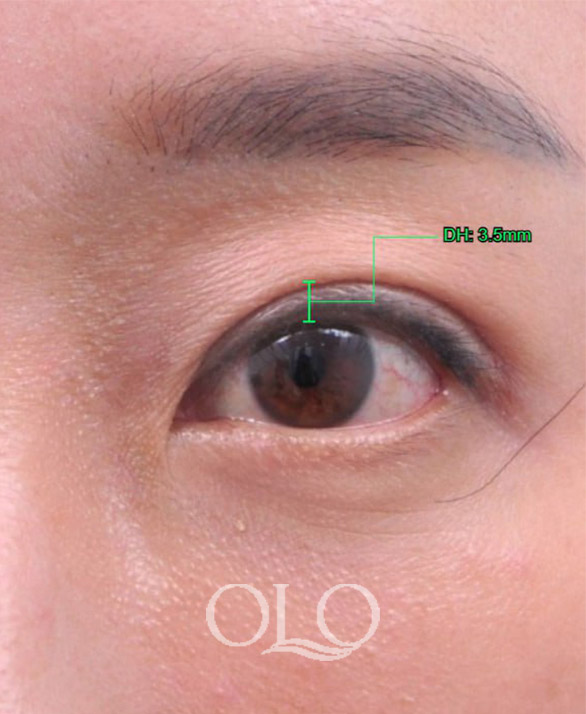
For example, the patient in the photo below had a thick, high crease
that partially covered the iris, giving a sleepy and heavy appearance.
After surgery, both the visible eyelid line and the diagnostic measurements showed significant improvement—creating a brighter and more open look.
✂️ Additional Refinements
If there are leftover scars from previous incisions or thickened skin causing discomfort or an unnatural texture,
we remove or refine these tissues to improve the final result.
⏱️ Surgery Duration & Recovery
Surgery time: About 1 hour and 30 minutes
Stitch removal: 5–7 days post-op
Swelling subsides: Most patients return to daily life within 2–3 weeks
Stable results: Typically visible from 1–2 months onward
Who Should Consider This
Those unhappy with an overly high crease from previous eyelid surgery
Patients with strong levator function but an unnatural or harsh appearance
Anyone seeking a softer, more harmonious look through revision
Techniques: Two Main Methods
Dual Crease Method
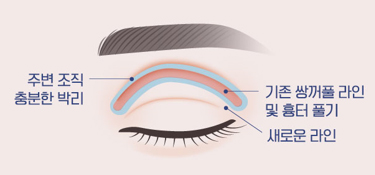
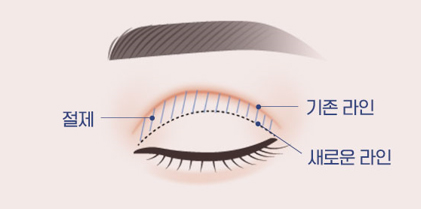
This technique involves detaching the old crease and creating a new, lower one.
It’s ideal for patients with little remaining eyelid skin due to aggressive previous surgery.
Here, the skin between the old and new crease is removed to lower the eyelid line.
This is more suitable for those with adequate skin flexibility and reserves.
Why “Lowering the Crease” Is a High-Level Procedure
This isn’t simply about shifting the line downward. It’s a delicate and complex surgery that requires:
Precise release of old adhesions
Stable formation of a new crease
Consideration of eyelid thickness, skin elasticity, levator strength, symmetry, and natural eye shape
In addition to aesthetic results, we also prioritize functional outcomes
—ensuring the eyes feel comfortable and fatigue-free after surgery.
That’s why experience and skill are critical.
Final Thoughts
Before jumping into a revision just because “the crease is too high,” it’s crucial to first get an accurate diagnosis
and consult with an experienced plastic surgeon.
Lowering the crease is not easily reversible, so make sure you proceed with caution and professional guidance.
If you have any questions, feel free to reach out via our blog or directly to the clinic. We’re happy to help!
Thank you :)
대표번호 : 02-542-8800
전화주시면 언제나 친절히 상담해 드립니다.
3호선 압구정역 4번 출구
서울특별시 강남구 논현로 867 (신사동 581-15) 한승빌딩 3F
진료시간 안내
평 일
AM 9 : 30 ~ PM 7 : 00
토요일
AM 9 : 00 ~ PM 4 : 00
(일요일, 공휴일 휴진합니다.)














